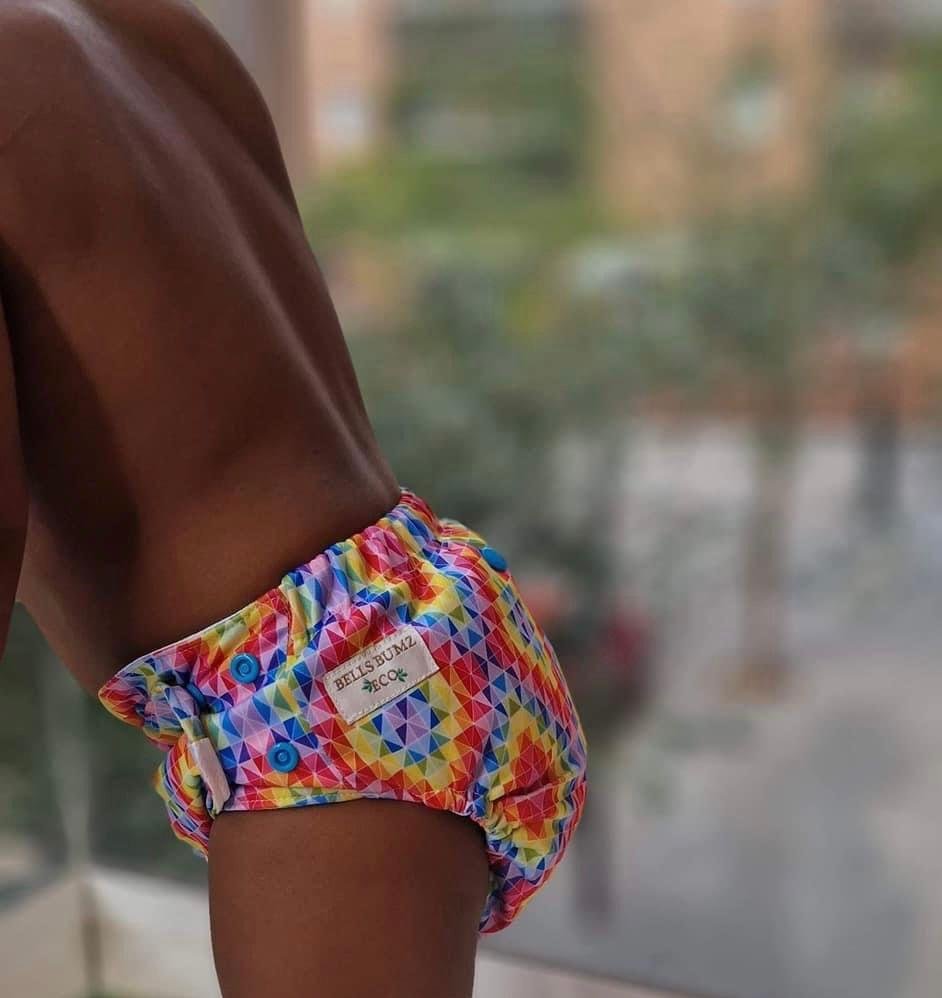Reusable nappies: 5 reasons we should all be ditching the disposables
The sustainable, money-saving parenting choice that we should all think about
As parents, we’re all so conscious of doing the right thing for our families and for the world we’re bringing them up in. And we are so lucky to have lots of sustainable options on the table. Toys made out of recycled plastic, organic food with no nasties and chemical free skincare products to name a few. But all these healthy, sustainable products can come with a price-tag to boot, so we don’t always have the luxury of making the ‘right’ choice.
But that’s not true of the choice between reusable and disposable nappies. This is one area where the cheapest option is also the most sustainable option. And reusable nappies aren’t just a bit cheaper, they will save you around £2,000 per child! So why aren’t we all using them?! We spoke to Bells Bumz founder, Chloe Bell, to get to the bottom of this. And here was her take!
It’s only a matter of time
Reusable nappies have seen huge growth over the last decade. Design has come a long way, with so many options out there to fit your needs. We now have lightweight designs, quick drying options, a range of sizes and lots more innovation. But we still think the real revolution is yet to come. The penny is just dropping that disposable nappies are single use plastic that just don’t make sense in today’s world.
The one-off cost is off-putting - but misguided!
Disposable nappies don’t require any one off cost when you’re getting ready for a baby, other than a nappy bin perhaps. Whereas when you’re equipping yourself to use cloth nappies, you make an upfront investment to get started, including nappies, liners, wraps and bins. This comes to around £300. Even though this is discounted further using the nappy incentive scheme, lots of people find it off-putting. But…and this is a BIG EXPENSIVE BUT….one baby uses up to 5,000 disposable nappies in their lifetime, that is a cost of around £2675. Let’s assume you spend a bit further on cloth nappies and double your initial investment, spending £600. That means you save around £2000 when using reusable nappies, rather than disposable ones. And even more if you’re choosing a premium ‘biodegradable’ brand of disposable.
People debate the sustainability factor
There are a few things to take into account when comparing the sustainability of cloth nappies.
Waste management
Manufacturing
Transportation
The waste management one is simple. Disposable nappies (even biodegradable ones) take between 50 and 500 years to biodegrade in landfill sites where their plastic, chemicals and untreated poo seep into the ecosystem. Cloth nappies (a baby might use 20-40 in their lifetime) are reused again and again and can even be handed down to other children or resold.
The most hotly debated point is the carbon involved in washing cloth nappies, versus the carbon used to manufacture and transport. In 2023, DEFRA published detailed analysis that confirms that as long as reusable nappies are responsibly washed, they use 25% less carbon than disposables. They stipulated that the washing of reusable nappies must be sustainable, so that’s something to be mindful of, but certainly not a reason to dismiss the environmental impact of them. Reject cloth nappies because of the perceived inconvenience if you like, but the environmental impact is there for you to see in black and white!
The washing is not manageable
This is where I have some empathy - it is undeniably more convenient to throw something away than to wash it. But the washing is not that bad! We are just in the habit of buying and throwing away disposable nappies and it is the change in behaviour that requires effort, not the actual habit. Washing cloth nappies is an extra part of your load, but once you have run a short rinse, nappies can be run alongside the rest of your wash. But you probably have to try it to believe me!
Bulky cloth nappies are really uncomfortable
I often speak to parents who see pictures of cloth nappies and think how bulky and hot they must be. This is a fair assumption based on appearance, but it’s not the experience of babies that wear them. They don’t mind wearing nappies in the same way that we might and the fabric used is far more breathable than the synthetic fibre of disposable nappies. If anyone has tried period pants or reusable sanitary towels, you will understand the difference. Furthermore, reusable nappies are made from natural material, with no chemicals, unlike disposable nappies. All this means that they are less likely to result in nappy rash.
Try it for yourself
If Chloe has convinced you of the benefits of cloth nappies (or if you were already sold), we have some amazing resources to help you get started.
Join our FREE masterclass with The Positive Birth Company and Bells Bumz to hear all the practical information you need
Claim your FREE cloth nappy via the incentive scheme to get you started (this also gives you a huge discount on subsequent purchases)
FREE 1:1 guidance from Bells Bumz so you know what you need and can get started using their range

